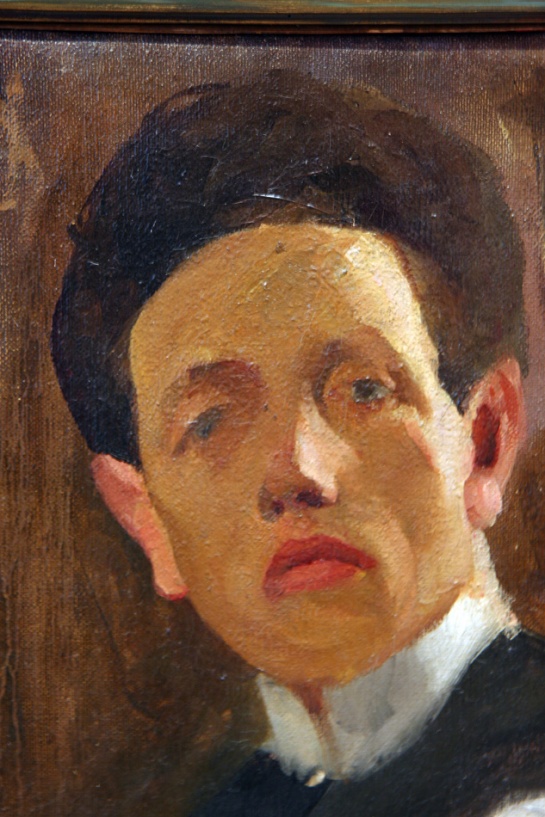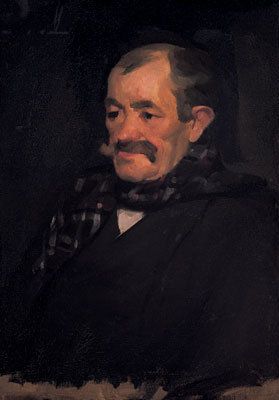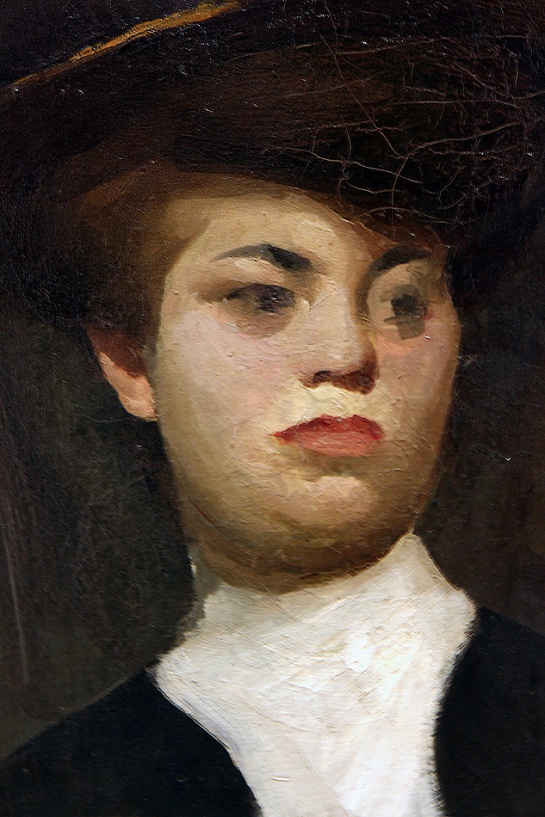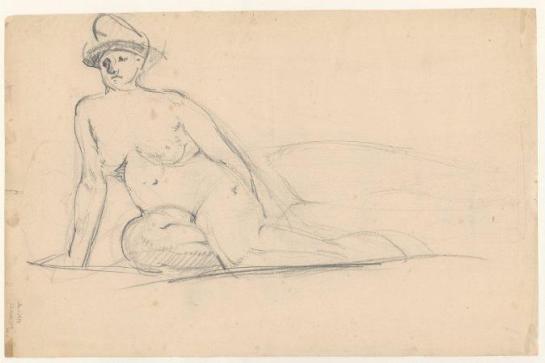In Nazi ideology, the Fuhrer is the living embodiment of the people’s community (volksgemeinschaft); he is the manifestation of the people’s will, and thus ties the entire presentation and ideological system (weltanschauung) together as one cohesive whole. Yet, the “Fuhrer principle” is not wholly explanatory of Nazism, nor should it be taken to be [1]. Rituals, symbols, and their repetition were crucial in the presentation and maintenance of Nazism as an ideological hegemon. This much is obvious – one cannot escape the prevalence of grand illustrations of Nazi spectacles in Western popular media, given the photos of the momentous Nuremberg rallies and others, especially seen in Leni Riefenstahl’s Triumph of the Will. They have been seared in the public mind, but in doing so, they have also been mostly emptied of historical context.
Nazism would not have been as successful as it was had there not been historical precedent, and this continuity is crucial to demarcate because it places us squarely in the minds of the German spectator, and grants us an understanding of the allure behind the presentation. Thus, the purpose of this essay is twofold – for one, it aims to further affirm the claims that ritual was crucial to the maintenance of weltanschauung and relied on it; and secondly, I will demonstrate that Nazi rituals harkened back to forms of previous mass public expressions (Catholic, Protestant, Teutonic, and otherwise) which were emptied of their prior substance and used for other ideological ends, namely that of the Nazi state. These rituals took the form of religion in what German legal scholar Herman Heller pithily called “Catholicism without Christianity” [2]. Nazism transformed religion’s rituals and politically utilized it by “[obscuring its] transcendence by means of an ever-larger infusion of ritual” [3]. I hope to show how ritual and historical continuity was one of the central spectral features of the weltanschauung, and was thus integral to its legitimacy.
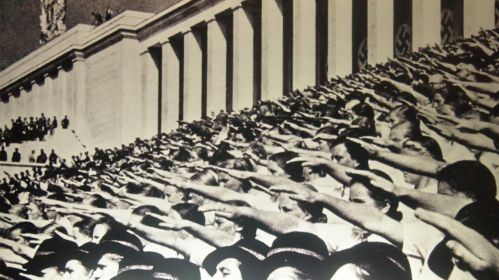
I. The Main Components of the Nazi Mythos
A dominant group demands a mythos for it be seen as historically legitimate. One cannot discuss political rituals, or any tradition, without discussing their mythologized origins. As Eric Hobsbawm writes, “[invented traditions] are responses to novel situations which take the form of reference to old situations, or which establish their own past by quasi-obligatory repetition” [4]. This type of historical “play” – the usage of history for ideological ends – necessitates a myth and presentation in order for it to be viewed as a consistent narrative by its viewers. The Nazis were able to do so by creating a “holy history,” sanctifying their politics to works towards their mythologized ends [5].
The religious amenities of fascism are well-documented. Academic Paul Mazgaj writes:
Translating the ancient religious topos of death and redemption into a secular myth of national decadence and renewal, fascists were able to project an incredible dynamism, sense that a new society would soon rise from the ashes of the dying one [6].
Several authors had commented on the relationship between mythology and politics more generally. Emilio Gentile theorized about the sacralization of politics as one involving a political liturgy, an elect community, and a specified code of ethics [7]. Karen Anderson has written of the necessity of “sacrifice, liturgy, and ritual” in mythology [8]. Stanley Stowers in his piece The Concepts of ‘Religion,’ ‘Political Religion’ and the Study of Nazism asks us a pressing question – “did National Socialism break down the wall that modernity had recently erected between the secular domain of politics and the domain of religion?” [9]. Perhaps a glimpse of the answer can be found in a quotation from the National sozialistishe Monatshefte in its September, 1938 issue:
It is said that the body belongs to the state, and the soul to the Church or God. This is no longer the case. The whole man, body and soul, belongs to the German nation and to the German state. The latter has also taken all matters of faith under its own control [10].
This supposed “breakdown between politics and religion” must first be understood through the basis of Nazi ideology – the myth.
The Nazi mythos can be broken up into four main mythological “clusters.” Firstly, there is the myth of the leader or messiah represented through the Adolf Hitler whose goal is to unite and lead the volk towards historical salvation. Secondly, there are the people themselves (volksgemeinschaft), who form a community united all under the domain of the Fuhrer. Third is the concept of degeneracy or the myth of culturally alien things which pose a threat to the volk. Nazism depended on moral dualism, which several scholars such as Hamilton Twombly Burden have dubbed “Manichean,” which rests on the premise that all things fall on one of two sides of the dividing line – that which is “good or bad, right or wrong, or us or not of us” [11]. The Manichean evil in this scheme then, for Nazism, is the Jew who represents “the war of life or death” but extends even greater to include everything that is assumed non-German including socialists, Roma people, the disabled, and Slavs [12]. Fourth and last is salvation or rebirth which scholar Rodger Griffin has called “palingenetic ultra-nationalism” taken from the Greek word palingenesis meaning “becoming again” [13]. For Nazism, this rebirth or salvation would come as a cataclysmic end during which all cases of prior anomie, degeneracy, and moral crises would be resolved through the Fuhrer. This is Nazi salvation history (heilsgeschichte), sacralized politics for this world and not the next, which affirmed the reality of their cause; they thus painted reality in this mythos and saw themselves as Germany’s proper eternal return. In doing so, they also created the conditions with which to justify their political ascension.
II. The Necessity of Ritual
Public rituals in Nazi ideology served to create internal consensus where the spectacle would work as a mass suggestion. This was done through huge parties and grandiose architectural feats. And Hitler himself knew the allure of these spectacles. Simon Taylor in Symbol and Ritual under National Socialism brilliantly connects these grandstanding rituals to Hitler’s own words, quoting him writing after a socialist rally in Berlin just after WW1:
A sea of red flags, red scarves, and red flowers gave to this demonstration, in which an estimated 120,000 took part, an aspect that was gigantic from the purely external point of view. I myself could feel and understand how easily the man of the people succumbs to the suggestive magic of a spectacle so grandiose in effect [14].
The Nazi leadership understood the power of these performances. The rituals therefore accomplished a crucial role in the ideological framework of Nazism – it tangibly created the volksgemeinschaft which could be felt and seen, and hence “allowed for mechanisms of mass suggestion [to] operate” [15]. Spaces were thus architecturally designed to concentrate the crowd’s attention on the centerpiece: the Fuhrer or the holy symbol representing him [16]. Such fixtures were previously only seldom used for anything other than holy presentations. Architect Albert Speer’s “Cathedral of Light” (Lichtdom) drew on this historical continuity sharply, and Goebbels even spoke of the “need to emulate the mysticism of the Roman Catholic Church at party rallies” [17]. It is through these spectacles that the Nazis were able to stage-manage the psychological process of identification by using grandiosity and rituals to affirm their ideology’s superiority against the Manichean evil they were fighting against.
III. The Nazification of Tradition and Ritual
Simon Taylor identifies three types of National Socialist celebrations present in various forms from 1919 to 1945: (1) celebration of the National Socialist Year (Jahreslauf), (2) morning celebrations (Morgenfeiern), and (3) life celebrations (Lebensfeiern) [18]. Celebrations marking the National Socialist calendar year were most common and these included the Founding of the Party Programme (February 24th), the Fuhrer’s birthday (April 20th), and the commemoration of the failed 1923 Beer Hall Putsch (November 9th)[19]. Taylor also mentions other holidays which were previously Christian or labor holidays, but were re-imagined for Nazi purposes such as Christmas and Labor Day. The Nazi Party would use these public holidays to organize support as scholar Barry Stephenson notes in one such example in 1933 when the party rallied in Wittenberg’s Marketplace on the Protestant holiday of Reformation Day, October 31st [20]. In other such example of historical rewriting, the Nazi Party transformed Remembrance Day on March 16th, a day meant to mourn the fallen of World War One, to a day of pride and triumph where “the swastika flag was no longer to be lowered to half-mast, but flown proudly… as a symbol of Germany’s reawakened faith and pride” [21]. Taylor notes that many other holidays suffered the same fate including “Easter, Mother’s Day, Whitsun, [and] the Harvest Thanksgiving” [22]. These Christian and, in some cases, old pagan Teutonic customs, needed to be revived to counter what they called “Jewish-Marxist materialism” [23]. These state-sanctioned holidays created a cycle of “high holy days” which were meant to resemble religious calendars and signified when the people would carry out their yearly rites.
One particular ritual – the 9th of November – became central to the Nazi myth of palingenesis. It was here that narratives were transformed, connecting the defeat in 1923 to Nazi victory in 1933. The message of the ritual was of rebirth and martyrdom, that the spilling of Nazi blood during that failed coup was a prerequisite to the “historical inevitability” of National Socialism. On the morning of November 9th, 1935, Hitler unveiled the Bloodflag (Blutfahne), the flag carried by the conspirators in 1923. It was stained by the flag of its martyrs and was brought out to consecrate the newly-built Temple of Honor in Munich where the sixteen fallen party members were housed. The Bloodflag was a holy symbol and was thus unveiled only on the 9th of November and at Nuremburg during Reichsparty-day [24]. During its presentation, names of the fallen were read as upwards of thousands assembled party members and Hitler Youth responded “Here!” in unison. In this quasi-religious ceremony, the Fuhrer would symbolically unite the living with the dead – united through blood and honor. As Taylor writes, the Bloodflag was the “essential confirmation of the Nazi mythos” [25] symbolizing the Christian cross with Hitler as its figurehead, consecrated as Christ. If it had not already, Nazism had begun to take on religious signification with the unveiling of the Bloodflag. The flag was a “sanctuary,” the blood of the fallen was “holy,” and the Reich was “eternal” as it was constantly repeated through Nazi rhetoric [26].
In order to further affirm their fight against the Manichean evil, public gatherings were planned to combat presumed “degeneracy.” Book burnings were a staple where texts by Jews, certain intellectuals, and leftists were driven around in carriages through the streets for all to see and then subsequently burned. The ritual was not unprecedented in European history – for they were “reminiscent of both the medieval book burnings of Talmudic and heretical texts as well as the Catholic ceremony of the auto-da-fe” during which heretics were burned alive in a public act of penance [27]. An art exhibit of “degenerate art” was also organized by Adolf Zeigler and the Nazi Party 1937 to present to the German people the values that had previously undermined their society.
IV. Closing
Ritual and presentation were not peripheral to Nazi ideology. In fact, they were central to it. These public spectacles solidified the state’s supreme power, and touched on all facets of the Nazi mythos: the supremacy of the Fuhrer, the people’s community, the historical enemy, and Germany’s rebirth as a nation. Throughout all these spectacles, the fixation remained on the Fuhrer. Whereas such presentations were previously reserved for holiness, Nazism made politics sacrosanct; it reappropriated previously-religious symbols and rituals and emptied them of content, and thus filled them for their own use. And if it were not for this historical precedent, Nazism would have had little momentum. It required these historical parallels – and its party members acknowledged their mythic power, and organized with its help. Thus, although not a religion, Nazism took on religion’s mystical form and broke the barrier between the state and religion. It was a quasi-religious ideology without transcendence, Catholicism without Christ, but to its fervent followers, it was so much alike that they followed and swore its allegiance to it all the same.
***
[1] A succinct explanation of the Fuhrer Principle was said by Rudolf Hess at the end of Triumph of the Will: “Hitler is Germany and Germany is Hitler.”
[2] Max Ascoli, Arthur Feiler, Fascism for Whom? (New York: W. W. Norton and Company, 1938), 281.
[3] Richard Grunberger, The 12-Year Reich (New York: DeCapo Press, 1971), 72.
[4] Eric Hobsbawm, Terrance Ranger, The Invention of Tradition (Cambridge University Press, 2007), 3.
[5] Stanley Stowers, “The Concepts of ‘Religion’, ‘Political Religion’ and the Study of Nazism,” Journal of Contemporary History, Vol. 42, No. 1 (Jan. 2007): 9.
[6] Paul Mazgaj, Imagining Fascism: The Cultural Politics of the French Young Right (Cranburby, NJ: Rosemond Publishing, 2007), 30.
[7] Stanley Stowers, “The Concepts of ‘Religion’, ‘Political Religion’ and the Study of Nazism,” 16.
[8] Karen Armstong, A Short History of Myth (New York: Cannongate, 2006), 2-9.
[9] Stanley Stowers, “The Concepts of ‘Religion’, ‘Political Religion’ and the Study of Nazism,” 10.
[10] Otto of Austria, “Christianity and National-Socialism,” World Affairs, Vol. 105, No. 2 (June 1942): 76.
[11] Jason D. Lahman, “The Form that Fuels the Flame: Public Ritual and the Nazi Mythos,” Ex Post Facto, Volume XIX (2010): 47.
[12] Wilard Gaylin, Hatred (New York: Public Affairs Press, 2003), 221.
[13] Jason D. Lahman, “The Form that Fuels the Flame: Public Ritual and the Nazi Mythos,” 40-41.
[14] Simon Taylor, “Symbol and Ritual under National Socialism,” The British Journal of Sociology, Vol. 32, No. 4 (Dec. 1981), 511-512.
[15] Ibid., 512.
[16] Ibid., 513.
[17] Ibid.
[18] Ibid., 505.
[19] Ibid., 505-506.
[20] Barry Stephenson, Performing the Reformation: Public Ritual in the City of Luther (Oxford Univ. Press, 2010), 10.
[21] Simon Taylor, “Symbol and Ritual under National Socialism,” 506.
[22] Ibid.
[23] Ibid.
[24] Ibid., 509.
[25] Ibid., 510.
[26] Ibid., 513.
[27] Jason D. Lahman, “The Form that Fuels the Flame: Public Ritual and the Nazi Mythos,” 53.
